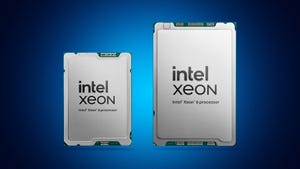Bitcoin Miner Core Scientific Converts Data Center Infrastructure for AIBitcoin Miner Core Scientific Converts Data Center Infrastructure for AI
The Texas-based company has deployed 16 MW of data center capacity for AI startup CoreWeave and plans to convert more.
May 9, 2024

(Bloomberg) -- Bitcoin miner Core Scientific is converting part of its infrastructure in order to power high-performance computing operations for artificial intelligence companies.
The Austin, Texas-based company deployed 16 MW data center capacity for AI startup CoreWeave and plans to convert more going forward. The move comes amid a slump in Bitcoin mining revenue and growing demand for data centers to host graphics processing units to power AI applications.
The main revenue for Bitcoin miners has been cut in half since late April when a code update in the blockchain took place. Called the halving, such updates reduce the Bitcoin rewarded to miners that validate transaction data on the network by 50% every four years to maintain an eventual hard cap of 21 million tokens and keep the digital currency from being inflationary. Last month’s halving, the fourth since 2012, slashed daily Bitcoin production from 900 to 450, resulting in an estimated loss of $10 billion in annual revenue for miners, based on the price of the original cryptocurrency at that time.
However, some large-scale miners such as Core Scientific are trying to boost revenue and take advantage of the AI boom by converting some of their assets to provide data-center services to AI companies that also rely on energy-intensive facilities.
“We are in regular discussion with our customer in this space and expect to build out this part of our business further over the course of the year,” Core Scientific Chief Executive Officer Adam Sullivan said on the company’s earnings call on Wednesday. “We aim to become a market leader and provide the digital infrastructure for high-performance computing.”
The complete conversion of 500 megawatts of Bitcoin mining infrastructure to host high-performance computing will likely take three to four years and the company expects to begin generating revenue as it adds clients, Sullivan said.
The company posted $179.3 million in revenue for the first quarter, an increase of $58.6 million over the same period last year. That was primarily driven by rising Bitcoin prices earlier this year as well as more computing power generated from its facilities.
Read more about:
North AmericaAbout the Author
You May Also Like









